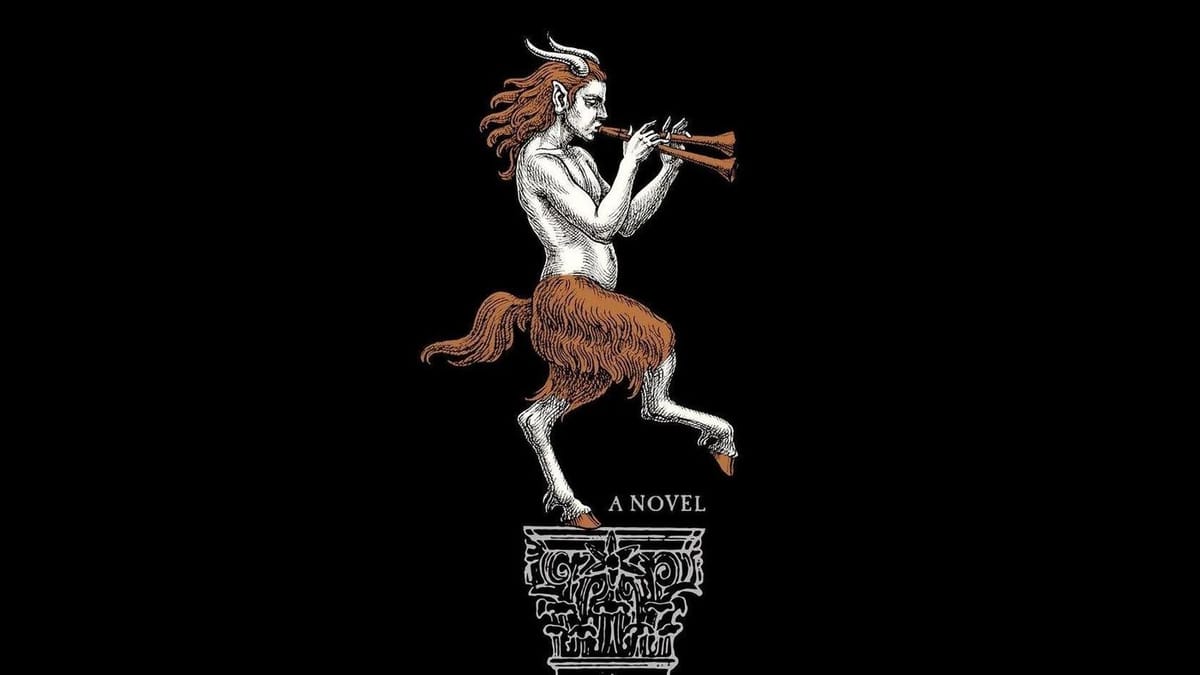Twin Peaks asks us to look at horrors. And then we forget.
Do you know who killed Laura Palmer? No. Really. Do you?

Warning: This article will discuss sexual abuse of children and adolescents. Also, I'm going to spoil who killed Laura Palmer on Twin Peaks.
Semi-routinely when people talk about the "scariest TV shows of all time," Twin Peaks will be somewhere near the top of the list. If you've never seen the show – which has largely persisted in our culture via a series of catchphrases and memes – you might be forgiven for wondering just what could possibly be so scary about the show. (Then you might find out David Lynch was involved and go, "Ohhhhhh..." Further, you might find out Mark Frost, a writer fascinated by the secret occult history of the US, was involved and once again go, "Oh, sure, yeah, got it.")
A very simple answer to "what makes this show scary?" is "Watch this clip." But to dig into this question a little more deeply requires a look at how Lynch and Frost are using our own forgetfulness against us. Twin Peaks is a media franchise actively designed to make you not think about its darkest horrors, leaving them existing somewhere in the back of your mind where they will grab you at unexpected hours.
To figure out why, we need to take a detour into a topic everybody loves to talk about nowadays: trauma.
The very first paragraph of Bessel van der Kolk's The Body Keeps the Score – that book about trauma everybody read during the pandemic – lays out quite bluntly how likely it is for any given American to have suffered a potentially traumatic event in childhood.
van der Kolk writes:
Research by the Centers for Disease Control and Prevention has shown that one in five Americans was sexually molested as a child; one in four was beaten by a parent to the point of a mark being left on their body; and one in three couples engages in physical violence. A quarter of us grew up with alcoholic relatives, and one out of eight witnessed their mother being beaten or hit.
I've thought about that paragraph many times since I first read it, more than almost any other part of the book. That it serves as the introduction to the text is meant to cement for the reader just how common – even mundane – these horrible things are. What I find most inescapable about it, however, is just how rooted so much of this pain is in the home, the place where a child is supposed to be safest of all.
We are somehow simultaneously more aware of this issue than ever before and just as blinded to it as we have always been. Anywhere you go online, you can find podcasts and YouTube channels and other venues where some of the worst shit people can do to each other is discussed forthrightly. We know that child abuse exists, that neglect exists, that molestation exists. And yet unless you directly know someone affected, it's so easy to assume this is happening elsewhere, rather than internalizing it as happening in our own communities.
Now, we distance ourselves from these realities for a number of wholly justifiable reasons. For one thing, it's not particularly enjoyable to think about how awful human beings can be to each other, particularly when it comes to family members mistreating each other. For another, we can't go through life thinking every single person we meet is a monster. We'd never leave our houses.
But our pop culture is very bad at talking about this too. As I've written before, some of that struggle lies in how difficult it is to simply depict traumatic experiences bluntly without the whole thing starting to feel forced. To directly depict horrible events requires a deft touch, and very few artists are so deft. What tends to work better is obscuring the horror through various layers of metaphor.

All of which is to say that nobody has handled this particular task better than David Lynch and Mark Frost handled it with the character of Laura Palmer in Twin Peaks.
Consider becoming a paid subscriber: For as little as $5 a month, you can support this newsletter and help keep it rolling. Paid subscribers get a weekly post on Fridays that goes out even on weeks the Wednesday newsletter is dark, access to the full archives, a monthly mailbag, and a link to the Episodes Discord server. There will be some other fun treats along the way. (In the new year, for instance, I'm planning on doing a weekly watch-along in the Discord. I'm still deciding on the show.) Click the button to learn more!
I did not watch Twin Peaks when it first aired, but the fervor around the show still trickled down into my tween-aged, newspaper-reading brain. Thus, I read an article that revealed the killer of Laura, the series' central corpse, long before I ever watched the show. So I knew that Laura had been killed by a malevolent entity named "Killer BOB." The article I read briefly mentioned that Bob had possessed Laura's father, Leland, to abuse and rape Laura across many years, before ultimately murdering her shortly before the series began. But the focus was heavily on Bob, not Leland.
Years later, when I actually watched the episode in question, I was surprised at how completely the article I had read – and most pieces writing up the reveal of Laura's killer – tried to make something eerie and strange into something concrete. Yes, the "official" explanation is that Bob possessed Leland at some point in his childhood, then acted violence upon others via Leland throughout the latter's life. But even within the episodes that reveal this (the seventh, eighth, and ninth of the second season), the show casts plenty of doubt onto the existence of Bob at all. Several characters believe that Leland is criminally insane; others believe he's using Bob as a distancing mechanism to deal with his own crimes. Even Leland himself says that he didn't always know when Bob was in control, implying that he was at least somewhat present for all of the evil things he did.

All of the above is further complicated by Twin Peaks: Fire Walk With Me and Twin Peaks: The Return, both of which simultaneously suggest that, yes, Bob is an actual evil spirit but also that his existence and ability to do anything at all are both directly tied to his ability to interact with humans. Bob might be a spirit of pure malevolence, but he can't get anything done if he doesn't have a willing accomplice. How Leland describes his relationship to Bob – as a force he "let in" when he was a child – has resonance with vampire stories, obviously. However, it's also reminiscent of the way that various mass murderers and other killers have spoken about their crimes being driven by some nebulous other within themselves. That being simply won't take no for an answer when the otherwise upstanding human wants to do anything other than commit horrible acts.
Yet to argue over the "reality" of Bob is to largely miss the point of him entirely. Even if he is a being of pure evil who can possess people and make them do his bidding, he's still hurting and killing people. In the most haunting scene in Fire Walk With Me, for instance, Laura realizes that the malevolent figure who is raping her is Bob, sure, but also that he is within her father. The revelation causes her extreme existential despair. She collapses in on herself.
Except... that's the second time Laura has realized that Bob and her father are one and the same in the film.
Early on, when she knows Bob is in her house, Laura waits to see who exits, knowing that Bob cannot simply be a random malevolence that preys upon her. When the door to her house opens and Leland strolls out, she has a complete meltdown. And then in the next scene, she seems... well, "fine" is always a stretch when it comes to Laura, a character who suffers endless amounts of horror, but she seems to have completely compartmentalized her father and Bob's oneness away. Even as she knows when and how to await Bob's arrival in her room – a ceiling fan spinning, for instance – she cannot let herself remember who Bob is. At least not until it's too late.
To me, these twinned scenes in Fire Walk with Me speak to the series' power at talking about both the horrors happening behind closed doors all around America and the ways in which we abstract those horrors away, even if we're suffering them. The kind of dissociation Laura practices is all too common for kids who suffer sexual abuse at the hands of a parent, and the many ways in which she shatters are too. It doesn't matter whether Bob is a real being or just a part of her father; from her perspective, nowhere can ever be safe again. The sweetness and sincerity at the heart of the show's first two seasons can no longer entirely be trusted because we know how rotten things can become.
Twin Peaks's viewership famously collapsed after the Laura Palmer killer reveal (though it was already on a downswing), and Fire Walk with Me was roundly panned upon its initial release. There are plenty of reasons to explain both of these things happening – the second half of Twin Peaks season two is frequently catastrophic, and the show no longer had a story engine at all; Fire Walk with Me is a viscerally unpleasant film to watch – but I have always wondered just how much the Leland reveal viscerally discomforted some viewers. To contemplate something like a father raping and killing his daughter, even with the distancing effect of a device like Bob, was simply too intense for too many viewers.
The success of Twin Peaks – and David Lynch more generally – has always lain in how nimbly it contrasts the depths of depravity with the simple joys of life. Dale Cooper's love of coffee and cherry pie stands in stark contrast to what happens inside the Palmer house, but the series suggests the two things exist on a spectrum. Too often, however, we try to forget that the same world contains all of these things. In Twin Peaks, especially, all involved won't let you forget – so viewers forgot for the show. After all, if somebody is going to tell you about Twin Peaks, they might start with "Who killed Laura Palmer?" or "Damn fine coffee" or the Red Room. But they're probably not going to bring up the identity of Laura's murderer. That I can still credibly put a spoiler warning on an article about that murder over 30 years after the episode aired suggests how easily this reveal exists in a kind of cultural semi-consciousness. You know who killed Laura Palmer; you also maybe want to forget.
This week's reading music: "Claw Machine" by Sloppy Jane (feat. Phoebe Bridgers)
The free edition of Episodes, which (usually) covers classic TV and film, is published every other Wednesday, and the subscriber-supportededitionof Episodes, which covers more recent stuff, is published every Friday. It's written by Emily St. James. If you have suggested topics, please reply to the email version of this newsletter or comment (if you are a paid subscriber).





